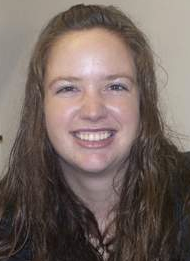I grew up on a farm 15 miles south of Admiral, about 30 miles from Shaunavon, so really the middle of nowhere.
When I was in Kindergarten, Admiral had a K-12 school. The next year it became a K-7 school; high school students were sent to Shaunavon. The Kindergarten teacher was the secretary, typing teacher for the older grades, and the librarian. One teacher taught grades 1-3 in a classroom, the principal taught grades 4-7 in a classroom, and our Learning Support Teacher taught 6/7 Social Studies and Science, while the principal taught the 4/5 split in those subjects – our LST was only there for mornings and went to Cadillac for the afternoons and our “classroom” with her was actually in a hallway with long tables and chairs surrounding them. By the time I was in grade 7, our LST had taken a job in Shaunavon and we were left with three staff for 22 students. The school has since closed.
I personally value the type of education I received. I feel it provided me with essential life skills. Our teachers would manage time and the classroom extremely effectively and within our quad for example we were separated into a 4/5 and 6/7 split.
For French class, one group would be at a round table at the front one day, while the other group remained at their desks. Our teacher worked with one group and the other would review the material together from the day before; once she got them going would come teach the other group and during that time the first group would be working on their new assignment, then once we were done the lesson she’d be back to the other group checking on them and answer questions as needed for the rest of the period. The next day it flipped as to who got the lesson first versus who reviewed.
In this fashion we learned how to work independently, how to work in a group – to problem solve together – if you didn’t know how to do something, someone else might. We didn’t copy work, but were allowed to ask other students questions if we were struggling and the teacher was busy – as long as we weren’t being unruly. We were small school strong; a tight knit community that supported each other.
So, when it comes to concerns of kids being together in elementary school classes, I look back on my experiences fondly. However, when it comes to the high school end it does worry me that students potentially aren’t prepared for heading out into the real world – aren’t getting the classes they need for the education they want to pursue after school.
Everyone wants what is fair, what will work best in the system… but, what is “fair?” If I break a cookie in half and give you a portion is it fair that my piece is slightly larger? Or, if I let you choose and you take the slightly larger piece, is that fair? When working with something like public schools it’s difficult to say what is fair. The community sees a teacher being cut, a person who is part of the school; while the school division is looking at numbers and sees that there are less students here and more there, so how do they best accommodate that? Is it fair to larger schools that there’s a small school factor to boost teacher numbers? Is it fair to smaller schools that large schools have a greater population and thus will likely have more “in need” students qualifying them for more EA’s?
It honestly seems like a terribly difficult situation on both fronts and I have no answers. I just know that I value my small school foundations and feel for those that currently have to deal with this conundrum.




